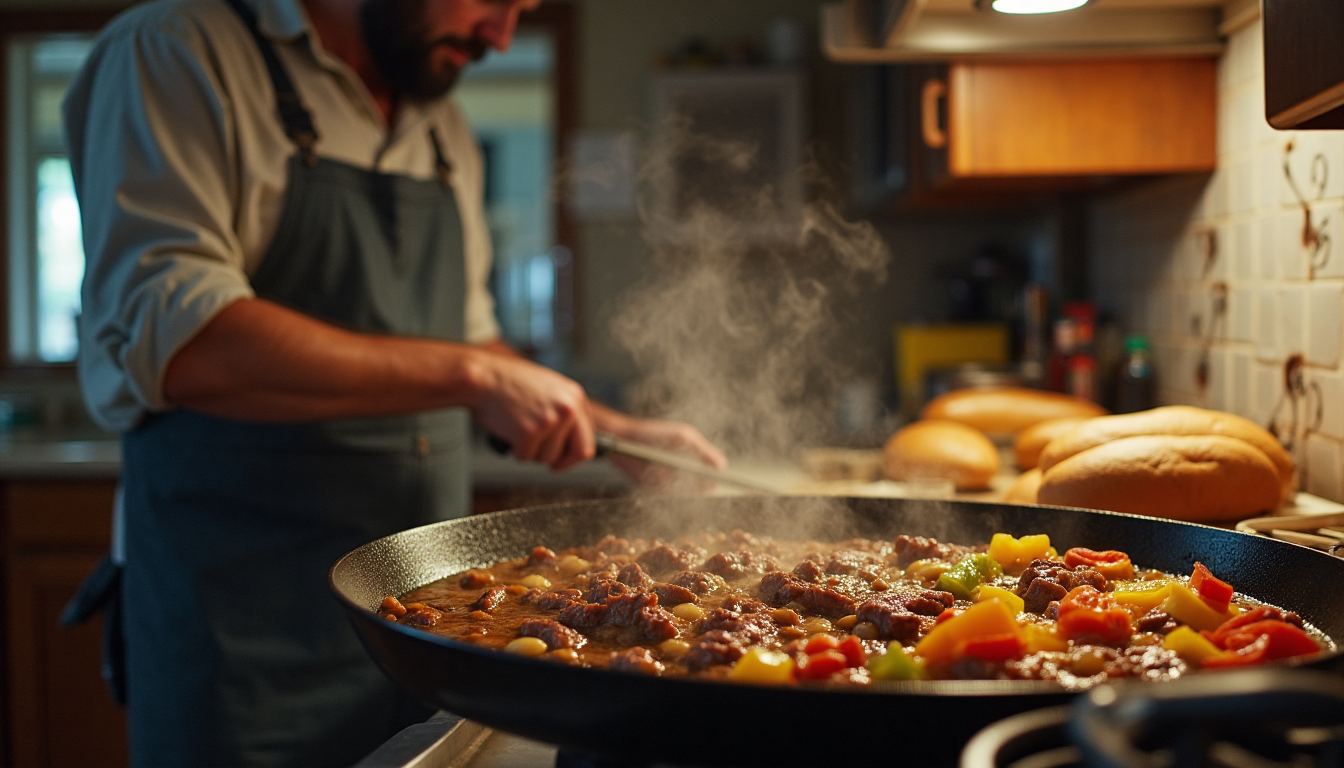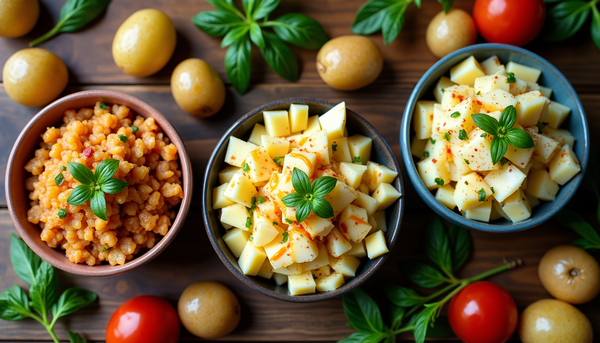Why I Stopped Making "Authentic" Food

Why I Stopped Making "Authentic" Food (And Started Cooking What Actually Works)
Last Tuesday, I'm staring at my kitchen counter at 6:47 PM. My 8-year-old's asking about dinner, I've got exactly one pound of flank steak thawing, and honestly? The thought of assembling proper Philly cheesesteaks feels like climbing Mount Everest.
So I did what any rational human would do.
I threw everything into a skillet and called it dinner.
The Authenticity Trap That's Stealing Your Weeknight Joy
Here's something I learned running a food truck for three years before diving into the tech world — authenticity is overrated when you're feeding real people on real schedules.
Don't get me wrong. I respect tradition. I've spent hours researching the "correct" way to make everything from ramen to risotto. But somewhere between my second career change and becoming a dad, I realized something crucial: the best recipe is the one you'll actually make.
That Philly cheesesteak skillet I threw together? My family devoured it. No hoagie rolls getting soggy. No cheese sliding off the sides. No assembly line of sandwiches that get cold while I'm still cooking the last batch.
Just pure, unapologetic comfort food that worked.
The Liberation of "Good Enough" (That's Actually Better)
When I deconstructed that cheesesteak, something clicked. I wasn't being lazy — I was being practical. And sometimes practical leads to something genuinely better than the original.
Think about it: what makes a Philly cheesesteak great isn't the bread. It's the marriage of tender steak, caramelized onions, melty cheese, and those slightly charred bell peppers. Everything else? Just packaging.
The skillet method actually improves on the classic because:
- Every bite has the perfect ratio of ingredients
- The cheese doesn't slide off into your lap
- You can control exactly how charred your vegetables get
- It's ready in 35 minutes, not the hour-plus you'd spend on traditional prep
But here's where I went rogue (and where some purists might clutch their pearls): I added a spice blend inspired by Pepperjax Grill. Garlic powder, paprika, chili powder, even a touch of celery seed.
Is it "authentic" Philadelphia? Nope. Does it make my kids actually excited about dinner? Absolutely.
The Technique Behind the Magic (Or Why Your Skillet Temperature Matters More Than Your Recipe)
After years of cooking professionally and now just trying to feed my family without losing my mind, I've learned that technique trumps authenticity every single time.
Here's what actually matters when you're making this kind of deconstructed comfort food:
1. Temperature is Everything
Your skillet needs to be hot. Not medium-hot. Not "I think this is probably warm enough." Hot. When you add those vegetables, you should hear them sizzle immediately. That's how you get the caramelization that makes people think you're some kind of kitchen wizard.
2. Patience with the Char
I know you want to keep stirring. Resist. Let those vegetables sit for a full 1-2 minutes between stirs. That slight char on the bottom? That's flavor. That's what separates a good weeknight dinner from something that actually makes your family ask for seconds.
3. The Steak Slice Game-Changer
Freeze your steak for 20-30 minutes before slicing. I learned this trick working the lunch rush — when you're cutting 20 pounds of steak, you need every slice to be consistent. Against the grain, 1/8 to 1/4 inch thick. It's the difference between tender bites and a jaw workout.
4. Cheese Timing
Add the cheese, cover for exactly one minute, then remove the lid. Any longer and you're heading into rubber territory. Trust me on this one — I've ruined enough perfectly good dinners by overthinking the cheese melt.
Beyond the Recipe: Making It Yours
This is where cooking gets fun again. Once you stop worrying about doing it "right," you can start doing it your way.
Some variations I've tried that work:
The Heat Seeker: Add sliced jalapeños with your bell peppers. My wife loves this version, though the kids... less so.
The Veggie Smuggler: Thinly sliced zucchini and carrots disappear into this dish beautifully. Perfect for when you're trying to get more vegetables into small humans without negotiations.
The Protein Swap: Ground turkey seasoned the same way works surprisingly well. So does chicken thighs if you're feeling fancy.
The Cheese Adventure: Smoked gouda instead of provolone? Chef's kiss. White cheddar? Classic. That random fontina you bought and forgot about? Perfect.
The point isn't to follow my variations exactly. The point is to use what you have and trust your instincts.
What This Really Means for Your Kitchen (And Your Sanity)
I'm not advocating for abandoning all culinary traditions. What I'm suggesting is that maybe, just maybe, the goal should be getting good food on the table that makes people happy.
Some nights, that's a perfectly executed traditional recipe that took three hours and every pot you own.
Most nights? It's throwing some quality ingredients in a hot skillet and trusting the process.
My kids don't care that our "Philly cheesesteak" doesn't come on a hoagie roll. They care that it tastes good and that Dad doesn't look stressed while making it.
My wife doesn't care that I added spices that would horrify someone from South Philly. She cares that dinner happens without drama and that there might even be leftovers for lunch tomorrow.
The Questions I'm Still Figuring Out
Here's what I'm curious about as I keep evolving how I think about cooking:
What other "sacred" dishes would actually be better deconstructed? I'm eyeing tacos next. Maybe even pizza. (Please don't @ me, Italians.)
How do we balance teaching kids about culinary traditions while also showing them that cooking should be adaptable and stress-free?
Is there a middle ground between Instagram-perfect authenticity and "whatever works" pragmatism?
I don't have all the answers. But I know this: since I started prioritizing "does this work for my actual life" over "is this historically accurate," our family dinners have gotten consistently better and way less stressful.
Your Turn to Experiment
So here's my challenge for you: pick one dish you love but never make because it feels too complicated or time-consuming. Then ask yourself — what would happen if I stripped this down to just the essential flavors and techniques?
Maybe it's beef stroganoff in a skillet instead of the traditional preparation. Maybe it's deconstructed fish tacos in a bowl. Maybe it's something I haven't even thought of yet.
Try it this week. See what happens when you give yourself permission to make it work for your life instead of working your life around the recipe.
And if you do try the cheesesteak skillet? Let me know what you change. Because the best recipes aren't the ones we follow perfectly — they're the ones we make our own.
What's one "traditional" dish you think could use a practical makeover? Drop a comment and let's figure this out together.




